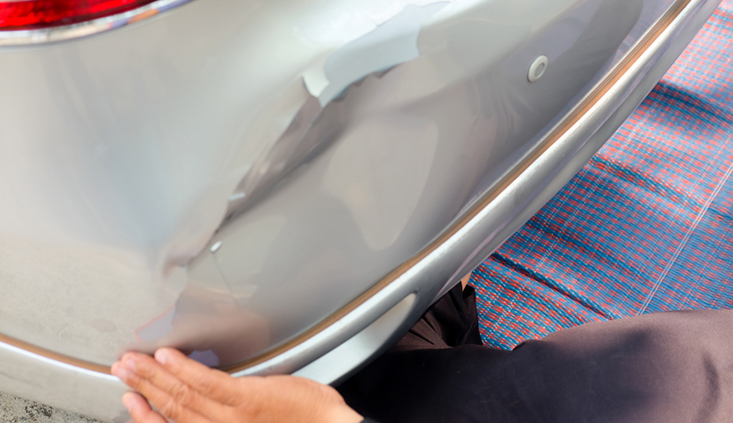Minor-impact soft-tissue cases
A look at how to overcome the defense of “minor impact, minor injury” while recognizing the inherent damages limitations of such cases
There always has been a belief on the part of the public that in vehicle-collision cases, all the plaintiff’s attorney has to do is to snap his or her fingers and the case is settled. The attorney and his client walk away with their money and the case is over.
Those of us who represent clients in these types of cases know that nothing could be further from the truth. This is especially true in “minor impact soft tissue” or MIST cases.
The public has been indoctrinated to believe that these cases are frivolous and that there are too many cases filed. It is my belief, even though it is perfectly legal, the amount of attorneys advertising at every consumer venue has contributed to this belief of the public in general.
Initial interview of client
If you decide to represent clients involved in a minor-impact case, it is of the utmost importance to obtain the proper information from the client. You need to establish facts as to liability and then proceed to ask questions to strengthen your case such as:
Describe the impact;
If a rear-ender, what was your position when the impact took place? For example: Was your neck turned, were you leaning forward, etc.?
Did you have any pre-existing medical issues that could have been aggravated?
Make sure that the doctor or chiropractor who is treating the client is aware of these facts and this information is included in any report.
At the initial interview, request that the client obtain photographs of the vehicle and any property damage estimates.
Property damage
The strongest defense argument in these cases is the minimal property damage and its relationship to any injury. The defense loves to argue: “Look at this damage. How could anyone be hurt?”
The best way to prevent this argument is by way of a motion in limine to prevent its introduction. (Accompanying this article at www.advocatemagazine.com, please find a motion in limine that my office uses to prevent the introduction of photographs, estimates and arguments about the lack of substantial damage.)
You should however, be prepared in the event that this motion in limine is denied. You should have obtained any available photographs of the vehicles involved. Even though there may have been minor damage to your client’s vehicle, there may have been more serious damage to the defendant’s vehicle. Utilize the discovery process to obtain this information (photographs, insurance estimates, etc.).
Hidden property damage
Contact the autobody shop immediately after signing up your case. You should obtain photographs of the vehicle at the autobody shop when it is torn down for repair. The body shop may find hidden damage to the frame or other components that was not initially visible. This will be useful in illustrating that there is more damage and therefore greater impact than initially thought.
If the case proceeds to trial, consider subpoenaing the autobody shop representative to testify. Talk to the representative before issuing the subpoena to make sure he or she is agreeable and will make a good witness. A hostile witness will not be beneficial. (Editor’s note — A useful source for autobody-repair experts is www.autobodynews.com.)
Voir dire
You have to be careful in conducting your voir dire. You do not want the prospective jurors to believe that the case is all about the minimal impact. Questioning must be done in a way that they respond based upon their own experiences.
Have they or a family member or friend ever treated with a chiropractor or doctor for strains and/or sprains after a vehicle accident where there was no immediate pain (or limited pain) felt at the accident scene? Did they have pain and were still able to drive their vehicle from the scene without having to be towed? Try to use common sense in your questioning. Try to make them understand that there can still be injuries though they are able to drive their vehicle. Did anyone wait a few days or even a week before seeking treatment?
Opening statement
You should bring the issue of minor impact out front in your opening: My client was involved in a “collision” with another vehicle. Fortunately for all involved, there was not serious (or only minor) damage to the vehicles. Though feeling some discomfort, he was able to drive his vehicle from the scene. He sought medical treatment within a few days. Match your opening with the facts.
Biomechanics
A favorite tool of the defense is to hire a biomechanics expert to say that the plaintiff could not be injured. You must prevent this. Biomechanics experts cannot testify about the cause of injuries. I have included a motion in limine to exclude testimony concerning causation of injuries. Additionally, most biomechanics experts have testified for both plaintiffs and defendants. Obtain their earlier depositions to find contradictory testimony. Research verdicts where the expert has testified contrary to medical practitioners who can testify as to causation. (Editor’s note: Sources for jury-verdict research include www.juryverdictalert.com, www.verdictsearch.com, www.dailyjournal.com and verdict libraries on LexisNexis.)
Where to file
Most MIST cases should be filed in Limited Jurisdiction unless there are serious injuries alleged that can be reasonably proved. Limited cases can be more time efficient and cost efficient. (A copy of a first amended standing order can be found accompanying this article at www.advocatemagazine.com.)
You must familiarize yourself with sections 90 through 98 of the Code of Civil Procedure. Discovery is somewhat limited. Witnesses’ declarations can also be used in lieu of live testimony. I also suggest that you obtain written authority from your client before filing in Limited; you need to protect yourself.
Summation
There have been many articles written and lectures given on minor-impact cases in which arguments are made that there can be serious injuries from such accidents. In my experience, this is very rare. In most cases of this type, there is not a large fee to be earned even though there is extensive time and work involved. Still, you owe it to your client to be prepared and do your best. Trying and winning a few of these cases indicates to the insurance carriers that you are competent, and they may be more likely to settle in the future.
Robert S. Fink

Robert S. Fink is a Past President of CAALA and is a longtime Board of Governors member. He frequently lectures for both Consumer Attorneys Association of Los Angeles (CAALA) and Consumer Attorneys of California (CAOC). Mr. Fink has been practicing law for over twenty years and has tried numerous cases. He frequently acts as both arbitrator and mediator in civil litigation matters and is a member of the Superior Court’s Alternative Dispute Resolution Committee. Mr. Fink received his J.D. from Whittier College of Law in 1975.
Copyright ©
2025
by the author.
For reprint permission, contact the publisher: Advocate Magazine

